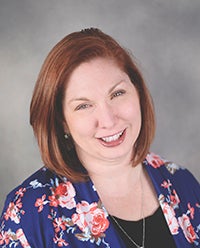Live United: It’s been busy behind the scenes at United Way office
Published 8:45 pm Friday, September 10, 2021
|
Getting your Trinity Audio player ready...
|
Live United by Erin Haag
Early this week, I wrote a heartfelt letter to our nonprofit agencies. It hasn’t gone out yet, but I’ve decided to share the gist of the letter in this article. I want our community to see what the “back end” of operating United Way looks like. There are major changes that are coming to our grant cycle. It’s been a little difficult, because agencies have asked, and the answer has been, “We’re working on it.” That doesn’t tell anyone a whole lot, and it’s hard not to give the details.

Erin Haag
As part of this grant restructure, a grant application was not released to the public in 2020. This may lead some to believe that a grant year was skipped, but this is not the case. The change in the timeline allowed UWFC to condense a grant timeline from 18 months to four months.
Eighteen to four months. Whew. That’s a lot of work. That took re-structuring our entire financial plan, how we do budgets and a whole bunch of other stuff I don’t even want to think about anymore. But we did it.
In the next few weeks, we will release a grant request for proposals for a shortened, simplified grant for 2021. We’ll wrap that up by Dec. 31, and then turn around and have our newly improved grant cycle in January 2022, with awards by April 2022.
I’m not sure if people can fully appreciate this unless they’ve been in the midst of this investigation. I hope they can. Otherwise, it might seem like we’re just twiddling our thumbs at the office.
While we didn’t release a normal grant cycle, we did provide several funding opportunities in 2020. We allocated out over $64,000 as part of our Safety Net Fund. We administered $24,000 in funding as part of the emergency Food & Shelter Program to local food shelves. We allocated out over $200,000 as part of the 2019-20 grant cycle (that last 18-month cycle).
There’s a pretty deep rabbit hole I can go into when I talk about why we needed to make changes. Some of it had to do with timing. Part of it has to do with accountability. While it’s not United Way’s job to tell an organization/agency how to run their programs, it’s our job to establish some community expectations. When we listen to our donors and what our donors want to see — we translate those into expectations. When we listen to the clients being served and recognize that there are significant barriers to accessing resources, we translate those into expectations.
In thinking about these expectations, I realized that one thing that programs truly struggled was sharing what their outcomes and indicators were. There was a lot of focus on what was being input into the program — the time, energy and money. Sometimes we would get information on the outputs of the program — number of individuals served, number of classes taught, etc. However, the stories tended to be very generic on the outcome. So I started investigating. How do other United Ways and other major grant funders convey outcomes?
Well, there’s a book on it. I read the book, and talked to a lot of people. First, let’s talk about what outcomes mean. Outcomes are benefits or changes for individuals during or after participating in program activities. They are influenced by a program’s outputs. Outcomes are what participants know, think or can do, or how they behave that is different following the program.
It’s about lasting change. It’s not always the obvious thing either. For example: An input is the value of time, staff and money to provide hot meals to seniors. The output is 65 meals served a week. The outcome is that the senior is able to socialize once a week at meals, reducing feelings of depression and isolation.
In the next few weeks, we’ll be sharing our newly developed shared outcomes as part of the 2021 grant cycle. It’s a set of indicators, goals and outcomes for the areas of health, education and income. The board of directors approved the use of it, but also stipulated that agencies could write their own outcomes. That’s important to me too, because we want to hear feedback. There’s not a one-size-fits-all solution. But maybe we can streamline this a little bit. I shared a set of outcomes with one executive director to get a little feedback, and he immediately saw where his program fit in. These outcomes will be available to review on our website in a few weeks, open for the community to see the work that all of nonprofit programs are doing.
There’s a lot of back-end work happening that is exciting. It’s exciting to me anyway — I am fully aware that I can be a little bit of a geek when it comes to this type of stuff. I’m passionate about my geeky work though, and truly believe it can make a difference in our community. Keep an eye on our website in upcoming weeks — http://unitedwayfc.org. If you’re not a website person, and you’d like to have a copy of the shared outcomes, give my office a call. When it’s ready to be released, we’ll have a copy printed off for you. 507-373-8670. As always, thanks for LIVING UNITED.
Erin Haag is executive director of the United Way of Freeborn County.

